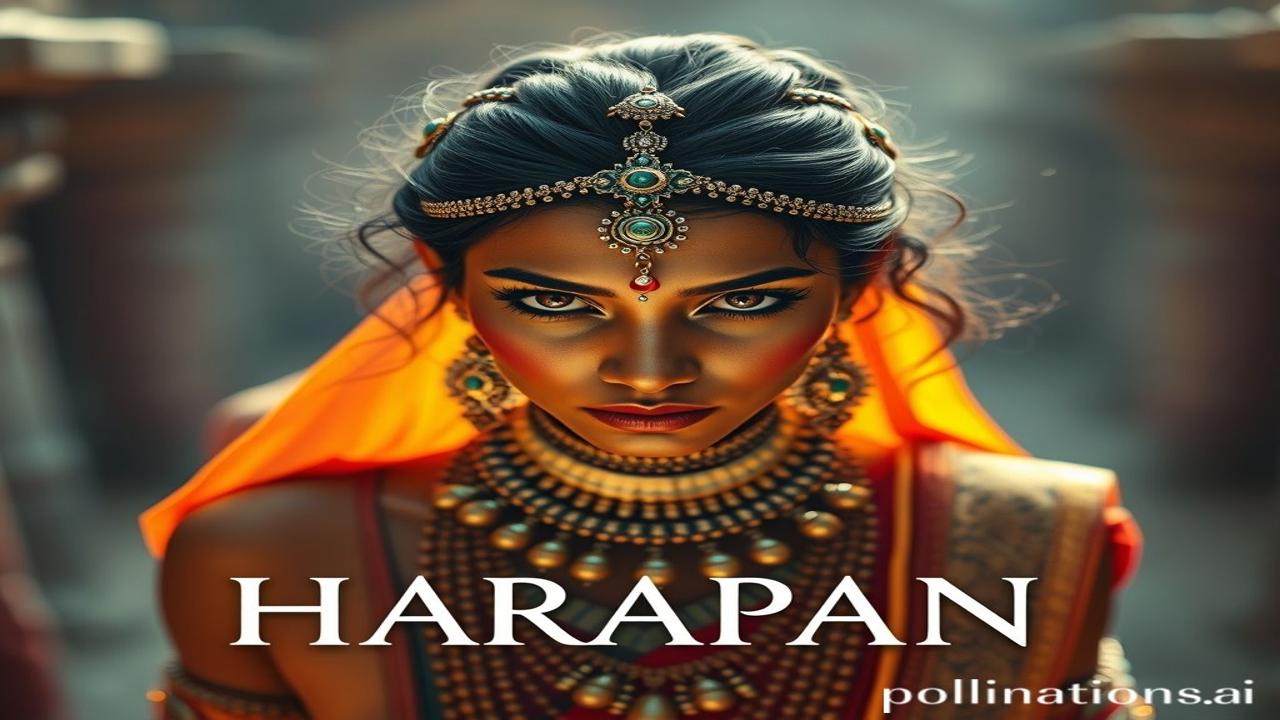Waqt Ki Dhool Mein Dabi Ek Roshan Duniya: Harappan Jewelry & Fashion
Kabhi socha hai, 5000 saal pehle, Indus Valley Civilization ki galiyon mein kya dhoom mach rahi hogi? Imagine, a bustling marketplace, the clinking of bangles, the rustle of cotton clothes, and the scent of freshly dyed fabrics filling the air. Waqt ki dhool mein kuch kahaniyan chhup jaati hain, lekin un kahaniyon ke nishan aaj bhi hamare dil mein dhak-dhak karte hain. Let’s journey back in time to explore the fascinating world of Harappan jewelry and fashion!
The Harappan Civilization: A Glimpse into the Past
The Harappan Civilization, also known as the Indus Valley Civilization (IVC), flourished between 3300 and 1700 BCE. This bronze age civilization, spanning across modern-day Pakistan and northwest India, was a marvel of urban planning and artistic achievement. We’re talking Mohenjo-daro, Harappa, Dholavira – names that whisper of organized cities, advanced drainage systems, and, yes, incredibly stylish people! Their jewelry and fashion weren’t just about adornment; they were reflections of social status, religious beliefs, and technological prowess. Yeh sab ek dharohar hai hamari, ek aaina jo hamare itihas ki roshni dikhata hai.
Rang Birange धागे: Harappan Fashion – Kapde Aur Libaas
Imagine, instead of fast fashion, the Harappans focused on slow, sustainable attire. Cotton was widely cultivated, and evidence suggests the use of wool and even silk! Think simple, comfortable clothing, primarily unstitched garments.
- Men: A simple dhoti-like lower garment was common. Sometimes, they’d wear a shawl draped over the shoulder.
- Women: A shorter skirt or a wrap-around lower garment was prevalent, often paired with a shawl or upper garment leaving the shoulders bare.
“Ma Rukmini ne aaj naye kapde pehne, kyunki mandir mein utsav tha…” Imagine a Harappan woman, perhaps named Rukmini, adorning herself in a vibrant, freshly dyed cotton skirt for a festival. Natural dyes, extracted from plants and minerals, brought color to their lives. Think vibrant reds, yellows, and blues! Aur yeh sirf fashion nahi tha; it was a reflection of their connection with prakriti, with nature.
Chamakti Jewelery: From Beads to Bangles – The Art of Adornment
Harappan jewelry was exquisitely crafted and incredibly diverse. They weren’t just throwing on some random beads, bhai! We’re talking about intricate designs and masterful craftsmanship.
- Materials: They used everything from gold, silver, copper, and bronze to semi-precious stones like carnelian, lapis lazuli, agate, and jasper. Terracotta, faience (glazed ceramic), and even seashells were used for more accessible jewelry.
- Common Items: Beads were the most common, used for necklaces, bracelets, and belts. Bangles made of terracotta, shell, and faience were wildly popular. Earrings, pendants, amulets, and even elaborate headdresses have been discovered.
- Symbolism: Amulets often featured animal motifs (bulls, elephants, unicorns) that likely held religious or symbolic significance. The use of certain colors or materials may also have had specific meanings.
Imagine a Harappan artisan meticulously carving a carnelian bead, the setting sun casting long shadows across his workshop. The clinking of his tools, the scent of burning clay, and the quiet satisfaction of creating something beautiful and meaningful. Yehi thi unki kala, unki शक्ति.
Cultural Significance Today: A Timeless Legacy
The echoes of Harappan jewelry and fashion resonate even today. We see traces of their designs in contemporary Indian jewelry, particularly in the use of beads and geometric patterns. The practice of wearing bangles holds deep cultural significance in many parts of India, a tradition that likely dates back to the Harappan era. Their emphasis on natural materials and simple designs reflects a sustainable approach to fashion that is increasingly relevant in our modern world. Harappan jewelry, as a dharohar, proves that fashion never goes out of style and that the soul of Indianness transcends the ages.
Fun Fact: The Case of the Bearded Priest-King
Log samajhte hain ki Harappan society simple thi, lekin asli sach yeh hai ki unki kala aur zindagani bahut sophisticated thi. One fascinating example is the “Bearded Priest-King” statue found in Mohenjo-daro. This sculpted figure wears an embroidered shawl, suggesting the existence of complex weaving and textile traditions. It challenges our assumptions about the simplicity of Harappan society and offers a glimpse into the potential complexities of their social hierarchy.
Visual & Sensory Echoes of the Past
Close your eyes and imagine: The hot, dusty air of Mohenjo-daro, the rhythmic pounding of drums during a festival, the sweet fragrance of jasmine garlands, the feel of smooth terracotta bangles against your skin, and the glint of sunlight on polished carnelian beads. These sensory experiences transport us back to a vibrant and thriving civilization, reminding us of the richness and depth of our Indian heritage.
अंतिम विचार या उद्धरण / Closing Insight
The Harappan Civilization may be long gone, but its legacy continues to inspire and influence us. Their artistry, their ingenuity, and their connection to nature serve as a reminder of the power of human creativity and the importance of preserving our cultural heritage.
“अतीत ही भविष्य का दर्पण है” – The past is a mirror to the future. Let us continue to learn from the wisdom of our ancestors and strive to create a brighter future, rooted in the values of sustainability, creativity, and cultural pride.
